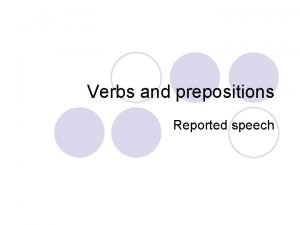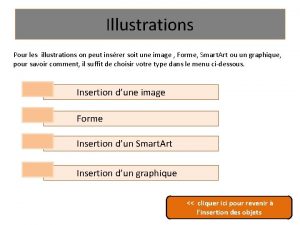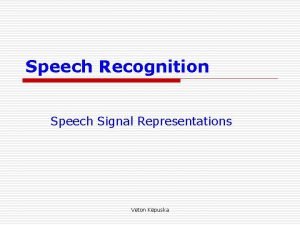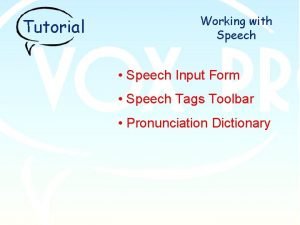Chapter 10 Supporting Your Supporting Your Speech Illustrations















- Slides: 15

Chapter 10 Supporting Your

Supporting Your Speech �Illustrations Story or anecdote example of ▪ An idea, issue, or problem being discussed ▪ Brief Illustrations ▪ A sentence or two to drive home a point ▪ Extended Illustrations ▪ Like a short story ▪ Hypothetical Illustrations ▪ Situations or events that haven’t actually occurred ▪ “Imagine you are stranded on a deserted island”

Supporting Your Speech �Illustrations Using illustrations effectively ▪ Relevance to subject being supported ▪ Should represent a trend ▪ Avoid illustrations using rare instances ▪ Vivid & specific ▪ Don’t drag out using too many details

Supporting Your Speech �Illustrations Using illustrations effectively ▪ Listeners should identify with ▪ Human drama, triumph, pain, joy etc. ▪ Personal ones are best ▪ A personal story that can be an illustration �Powerful effect on the audience �"Overcoming personal challenge" �"Impact of a personal decision"

Supporting Your Speech �Descriptions & Explanations ▪ Most commonly used form of support Describing ▪ To produce word pictures ▪ Appeal to audience senses Explaining how ▪ When discussing a process ▪ How a jury is selected Explaining Why ▪ Provide reason or consequences of something

Supporting Your Speech �Descriptions and Explanations Using them effectively ▪ Keep them brief ▪ If too long, will bore audience ▪ Use specific and concrete language ▪ To keep info lively & interesting ▪ Avoid too much ▪ Too much of the same becomes boring

Supporting Your Speech �Definitions ▪ Use to clarify uncommon terms Definitions by Classification ▪ From a reference book/dictionary Operational Definitions ▪ Explaining how something works or what it does

Supporting Your Speech �Definitions Using Them Effectively ▪ Use definitions when needed ▪ Not as time filler or for common terms ▪ Be certain there understandable ▪ Avoid definitions that leave audience confused ▪ Make definitions consistent with use in speech ▪ These two nations will never be friendly their amity goes back centuries

Supporting Your Speech �Analogies ▪ Comparison used to increase understanding Literal Analogies ▪ Comparison between two similar things Figurative Analogies ▪ Comparison between two seemingly different things ▪ Simile ▪ Metaphor

Supporting Your Speech �Analogies Using analogies effectively ▪ Make sure things compared literally are similar ▪ The different eras of recession, ▪ Artists or entertainers with similar styles ▪ Similarity in figurative comparisons should be apparent ▪ The workplace was a seething snake pit…

Supporting Your Speech �Statistics ▪ Use of numbers to define a fact Using statistics as support ▪ Use 3 or 4 brief examples to be effective

Supporting Your Speech �Statistics Using statistics effectively ▪ Using reliable sources ▪ Reputable – Gov. organizations, research reports, etc ▪ Authoritative – Primary sources -> secondary sources ▪ Unbiased – Sources not associated with special interest groups ▪ Interpret statistics accurately ▪ The population of native American students has increased over 3 oo % in just the last 3 semesters

Supporting Your Speech �Statistics ▪ Round off numbers ▪ If statistics have odd numbers, round them off for audience ▪ 2, 003, 456 -> 2, 000 ▪ Use visuals to present your statistics ▪ Use graphs, tables, charts, etc ▪ This will help audience recall or relate to the statistics you are sharing

Supporting Your Speech �Opinions ▪ Statements from people regarding ideas or topics Expert Testimony ▪ Opinion or statement from an expert in a given field Lay Testimony ▪ The statement or opinion of the average person Literary quotations ▪ Quote from an article or book

Supporting Your Speech �Opinions Using opinions effectively ▪ Cited authority should be expert on subject ▪ Identify sources ▪ Cite unbiased authorities ▪ Cite opinions that represent mass opinion ▪ Quote sources accurately ▪ Use literary quotations sparingly
 Photograph
Photograph Facts about patricia polacco
Facts about patricia polacco Chris van allsburg drawings
Chris van allsburg drawings Chris van allsburg pictures
Chris van allsburg pictures Alike other forms of energy
Alike other forms of energy Organizational aids examples
Organizational aids examples What drove away the swomee-swans?
What drove away the swomee-swans? What is a caption in a nonfiction book
What is a caption in a nonfiction book Output devices notes
Output devices notes Identify the energy conversion in the illustration below
Identify the energy conversion in the illustration below S&p 500 rolling 5 year returns
S&p 500 rolling 5 year returns Chris van allsburg illustrations
Chris van allsburg illustrations Electrical to mechanical example
Electrical to mechanical example Match the verbs and prepositions from
Match the verbs and prepositions from What is pure speech
What is pure speech Speech to the young speech to the progress-toward meaning
Speech to the young speech to the progress-toward meaning




























